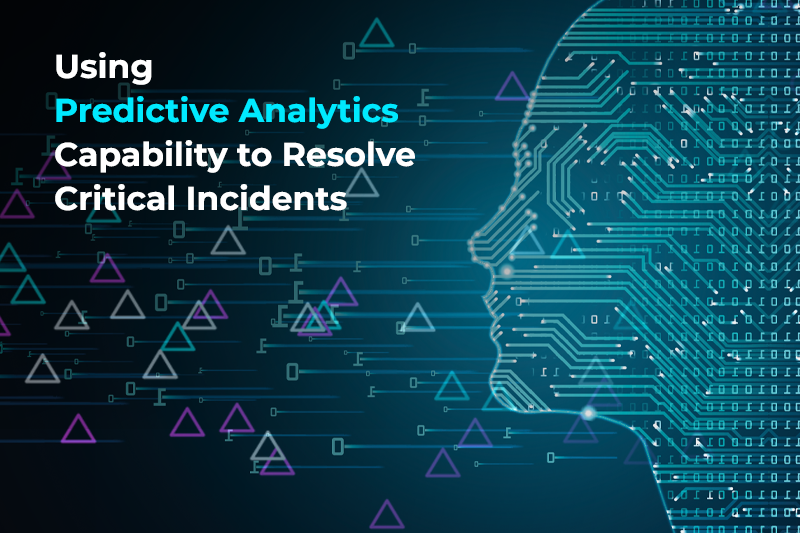In today’s digital ecosystem, virtually every aspect of an organization’s success is contingent on different departments working in concert delivering optimized performance. This is made possible with continued innovation of IT-powered services.
Lately, there has been a lot of hype and talk around the concept of AIOps. The IT landscape today has been seeing significant growth and is expected to be a fast-paced, fundamental change.
The Challenge in IT Operations today
With the change in volume, velocity, and frequency of data IT operations need to be able to help businesses with scalability. With about 40% of organizations being inundated by over a million events a day, and 11% receiving over 10 million events a day; the only way forward is a massive change in operations process and tools.
Most of these alerts are redundant or false with outages causing a huge spike in alarms. Apart from the effects mentioned above, this causes a strain on available resources, saps personnel of energy, and drastically reduces morale. This further leads to efficiency and performance issues which means service levels are at risk on a constant basis.
Why do you need AIOps?
Increasingly hybrid, complex, and fast-moving ecosystems have caused tremendous acceleration in application release cycles and change in number and kind of monitoring metrics all leading to an explosive volume and velocity of data.
Given these trends, IT teams are facing several pressing problems:
- The fundamental or root-cause issues often go unnoticed, drowned by excessive and often redundant event noise.
- This reduces efficiency and increases Mean Time To Repair [MTTR].
- Issues are often unseen and undetected until encountered by users and customers raise complaints/tickets.
- SLA compliance is at risk with an increasing amount of time taken to resolve issues.
This leads to the conclusion that IT teams today are struggling to keep pace with the current scenario and are ill-equipped to support innovation.
Reducing Event Noise with AIOps
To address the various challenges faced by IT operations teams today, the first step is to shift to a dynamic, responsive system. The best way to build that is to establish robust AIOps capabilities to reduce excessive event noise.
Data is no longer a casual acquaintance. Change begins by collecting, assimilating, and interpreting data from a spectrum of sources and technologies. This is followed by aggregating a variety of data types, including events, logs, security threats, metrics and end-user experience monitoring data in a single consolidated data repository for accessibility and cross-referencing.
This allows IT Ops teams to employ policy-based rules to enable alerts and events to be filtered, classified and aggregated based on different policies. This allows teams to be more proactive by identifying and differentiating information, warning, and critical alerts leading to faster resolution of critical alerts.
For this to come about, the primary requirement is for a system to sort and group events, apply rules, enforce policies, and enable filtering by activating a range of metrics – including [but, not limited to] location, time, monitoring source, application tier, severity, and more. This is the very basis for a significant reduction in event noise.
Pivotal to this strategy and system is Machine Learning [ML]. With the availability of real-time, high-quality datasets, behavior and patterns can be studied with historical context. Identifying patterns allows standardization of protocols and establishment of dynamic baselines. This significantly reduces the overhead and inaccuracy associated with static thresholds and associated event noise.
The ability to distinguish between those alerts stemming from bands of normalcy and those alerts arising due to true abnormalities that could impact users is the final step in reducing excessive alert noise.
Predictive Alerting
Predictive Alerting as an essential part of the AIOps arsenal is often overlooked. Machine Learning configures the system to be able to identify patterns and detect anomalies supplemented by predictive alerting. In concert with log analytics, this enables IT Ops teams to preemptively spot potential issues.
This allows issues to be addressed before any business impact by opening up a window of opportunity to act on warnings received and take steps to mitigate the worst-case scenario of the situation.
Predictive alerting is a valuable asset when applied to capacity management as well. The combination of machine learning and analytics to capacity data allows prior identification of potential capacity constraints and take corrective action. Capacity outages are some of the most difficult to resolve and this type of valuable insight will be highly beneficial.
What are the advantages of Event Noise Reduction and Predictive Alerting?
Leverage more focused intelligence
Helping IT Ops teams to gain insight into how specific issues affect performance and business success, allows them to rapidly identify and prioritize issues that are high on the business-critical list.
Improved productivity and morale
With a significant reduction in redundant and inaccurate alerts by up to 90%, personnel are able to obtain clear directions boosting productivity and morale.
Optimized performance levels
With predictive alerting, preemptive strikes help mitigate potential damage before business services and customers are impacted. This furthers enhances SLA compliance while improving user experience.
Reduced Cost and maximized resources
Resource shortages are brought down through the use of machine learning and automation. This further helps prevent and identify cost reduction opportunities by spotting the inefficiencies in IT infrastructure.
Are you facing any of these problems with your IT Ops?
CloudFabrix will help you run your IT smoothly seamlessly integrating with all your systems. We will leverage real-time data to provide actionable insights and streamline your IT team. This will allow management of priority tasks rather than wasting time in handling false alerts saving labor, money, and time. We guarantee that the long-term impact of AIOps on your IT operations will be transformative.
Please feel free to reach out to us in case of any questions.



